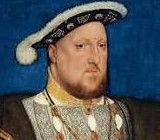IJC Art Adventurers
- dianakanter
- Jun 2
- 1 min read

On a Sunday in May, a group of IJC culture and history enthusiasts met at the Museum of History and Art in the Parc Cinquantenaire to visit the section dedicated to Gothic, Renaissance and Baroque art.
The visit was guided by Nezka, a Brussel-based Italian-Slovenian relatively new IJC member. As an art amateur and passionate to share some of her knowledge in classical studies, she took us on a tour of highlights from 12th-century Gothic art through to 17th-century Baroque which accounted for a period of deep cultural shift in the European society. The Church was still the main actor in commissioning and shaping art in Europe, but a new vision of the world, influenced by social unrest and economic growth, was about to bring a more human and rationally oriented approach.
We explored tapestry, stain glass, wooden-carved statues with religious content and pointy towers in Gothic architecture to a progressive liberalization during the Renaissance, with a more secular insight, featuring scenes from the human life.Last but not least, we were introduced to a significantly advanced society in the Baroque of the 17th century.
As a result of the discovery of the Americas, European colonization, and technological development - including scientific achievements in astronomy and Gutenberg’s printing machine which improved literacy by making books more accessible - art followed with examples from Greek classical architecture and sculpture, including decorative art, marking the wealth and freedom of the time.
The visit ended in a nearby cafeteria where we enjoyed tasty coffee and delicious ice-cream.
Photo: Procession of Clergy in Rome




Yorumlar